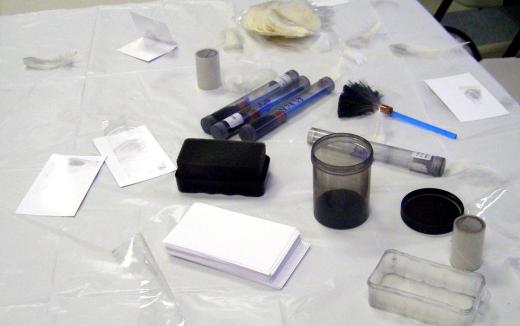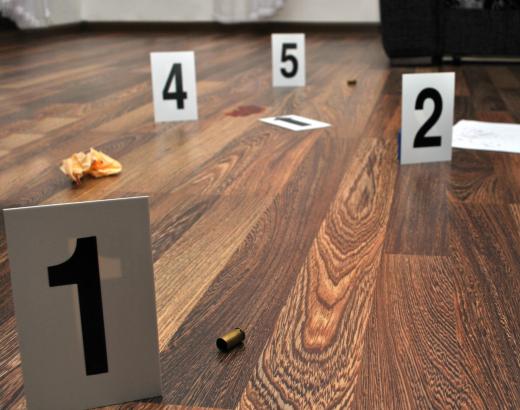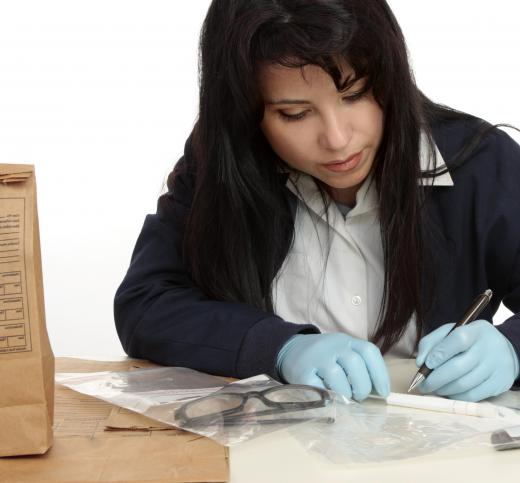What are the Different Types of Fingerprint Patterns?
There are three types of fingerprint patterns within what is known as the Henry Classification System, a method of differentiating fingerprint types that has endured for more than 100 years. Although every human fingerprint is unique, the Henry system breaks down the varieties into three types — the arch, the loop and the whorl. Some fingerprint experts note a fourth kind known as the composite. All the fingerprint patterns have distinct sub-categories. As a method of identifying criminals, the Henry system has largely been replaced by computer-enabled systems such as the U.S. Federal Bureau of Investigation’s (FBI) Automated Fingerprint Identification System (AFIS), which can more quickly match the ridge patterns found on fingerprints.
The arch fingerprint type has a pattern of ridges that curve upward, forming what resembles a stacked row of arches. In the plain arch, the lines usually flow consistently from one side of the fingertip to the other. This is widely considered the easiest type of print to identify. The tented arch is similar but has at least one ridge that points upward and breaks up one or more of the lines above.

The loop fingerprint has ridges that curl around the fingertip. The ridges point in one direction before rising and flowing in the opposite direction. Like the arch type, the loop is divided into two categories. The radial loop’s ridges move in a downward slope from the direction of the pinky toward the thumb. The ulnar loop’s ridges move downward in the opposite direction toward the pinky, the digit found on the same side as the forearm’s long ulna bone.

One of the most varied, complex fingerprint patterns is the whorl, which is broken down into four sub-categories. Whorl ridges form frequently closed, rounded shapes that expand outward from the delta, the point at which the ridges converge or form a different pattern. A fingerprint can have one or more delta. The plain whorl is the easiest of the four to classify because it consists of round circuits within round circuits emanating toward the fingerprint’s edge. The central pocket whorl, in contrast, has one or more ridges that disrupt the curving flow of lines, sometimes at right angles. The double loop whorl contains two distinct set of loop patterns. Composite whorls combine two fingerprint patterns — with the exception of the plain arch pattern — and also include complete circuits among the ridges.

Experts note a fourth type of fingerprint pattern known as the composite, although it is not part of the original Henry system. Like the whorl pattern, the composite has four sub-categories which have varying combinations of arch, loop and whorl features. The central pocket loop composite has one ridge that forms a complete loop and at least two deltas. The twinned loop is like the central pocket except that it has two complete, rounded shapes within the pattern. The lateral pocket loop is similar to the twinned loop with its two distinct, rounded circuits, the difference being at some point the ridges curve sharply downward in one direction. Lastly, the accidental loop combines rounded circuits and two distinct deltas with any of the known fingerprint types except the plain arch.

The first workable system of classifying fingerprints was introduced by British anthropologist Sir Francis Galton in 1888. A few years later, Sir Edward Henry, an Inspector-General of Police in British-controlled India, refined the Galtonian method of classification so successfully that the system became known by Henry’s name. For decades, law enforcement agencies in the English-speaking world used the Henry system, which often proved cumbersome because of the need for fingerprint experts and the time required to manually match the often staggering number of prints on file.
AS FEATURED ON:
AS FEATURED ON:















Discussion Comments
Fingerprint study has always fascinated me. Of the billions of people who have lived and died on this planet, I have to wonder -- did they *all* have a unique fingerprint pattern, or were there at least one or two repeats? It's an interesting thought.
When I was in middle school, we would scribble on paper with our pens until the ink was wet and then roll our fingertips on the spot, and then on clean paper, getting a fair fingerprint. The ink pads in the library were even better for that purpose. And if our school had a child ID day and a police officer visited, we would all get fingerprinted and get to take our fingerprints home. This was to help identify us in case someone snatched us while walking home from school. In spite of the rather grim purpose (which didn't faze us too much), ID day was always fun. We usually spent lunchtime comparing each other's prints.
Post your comments